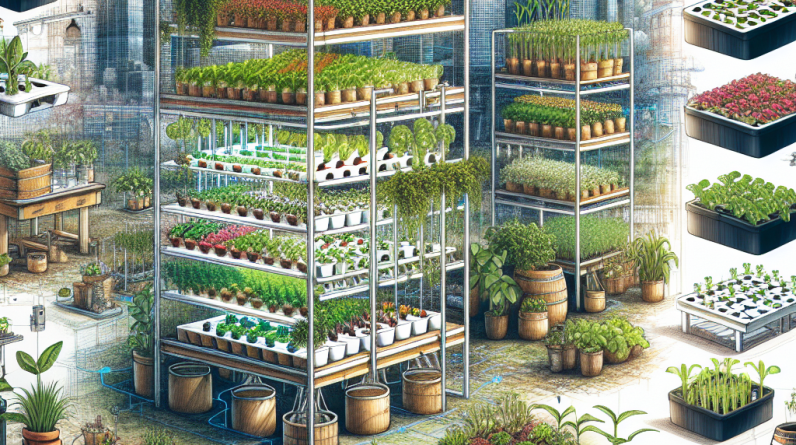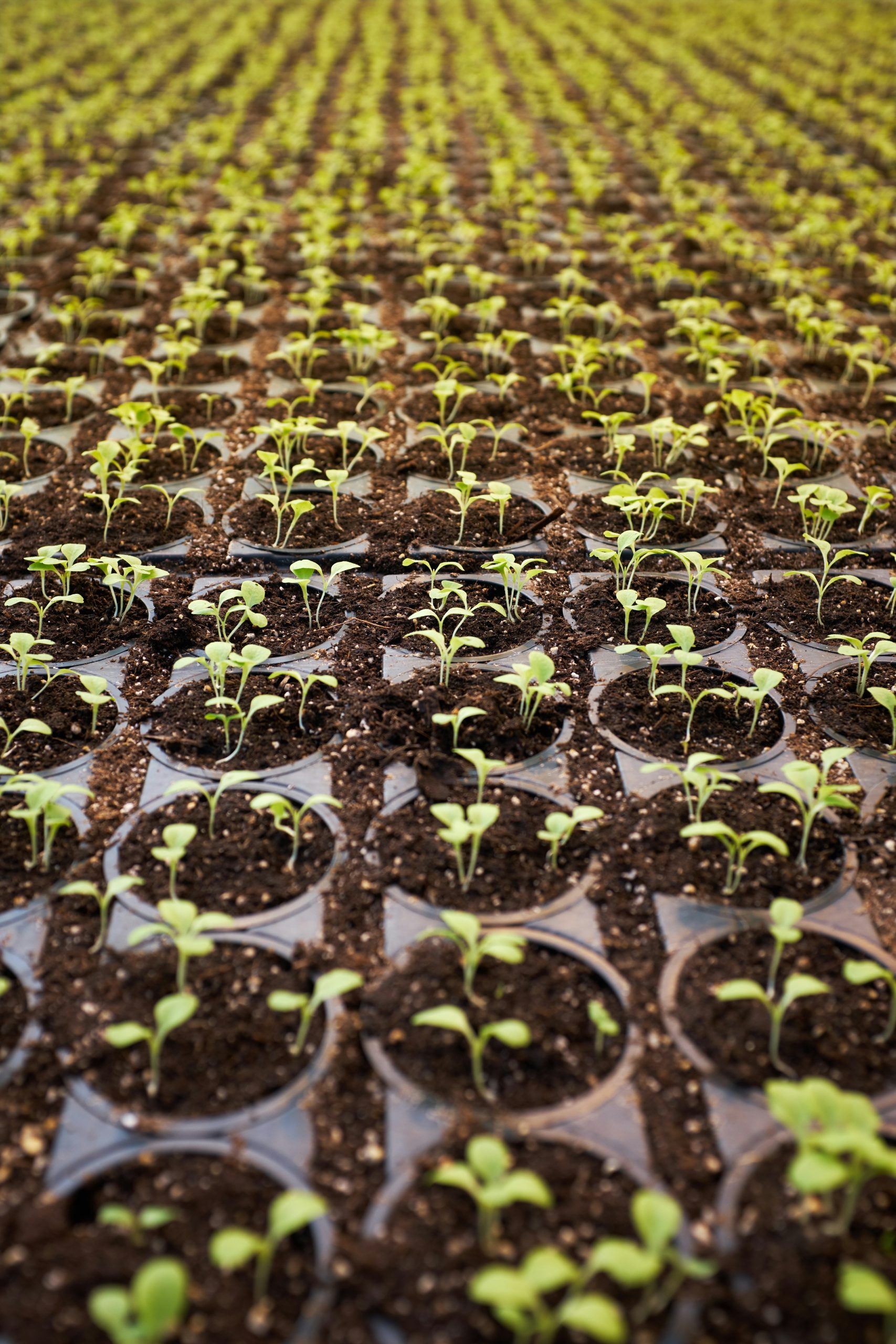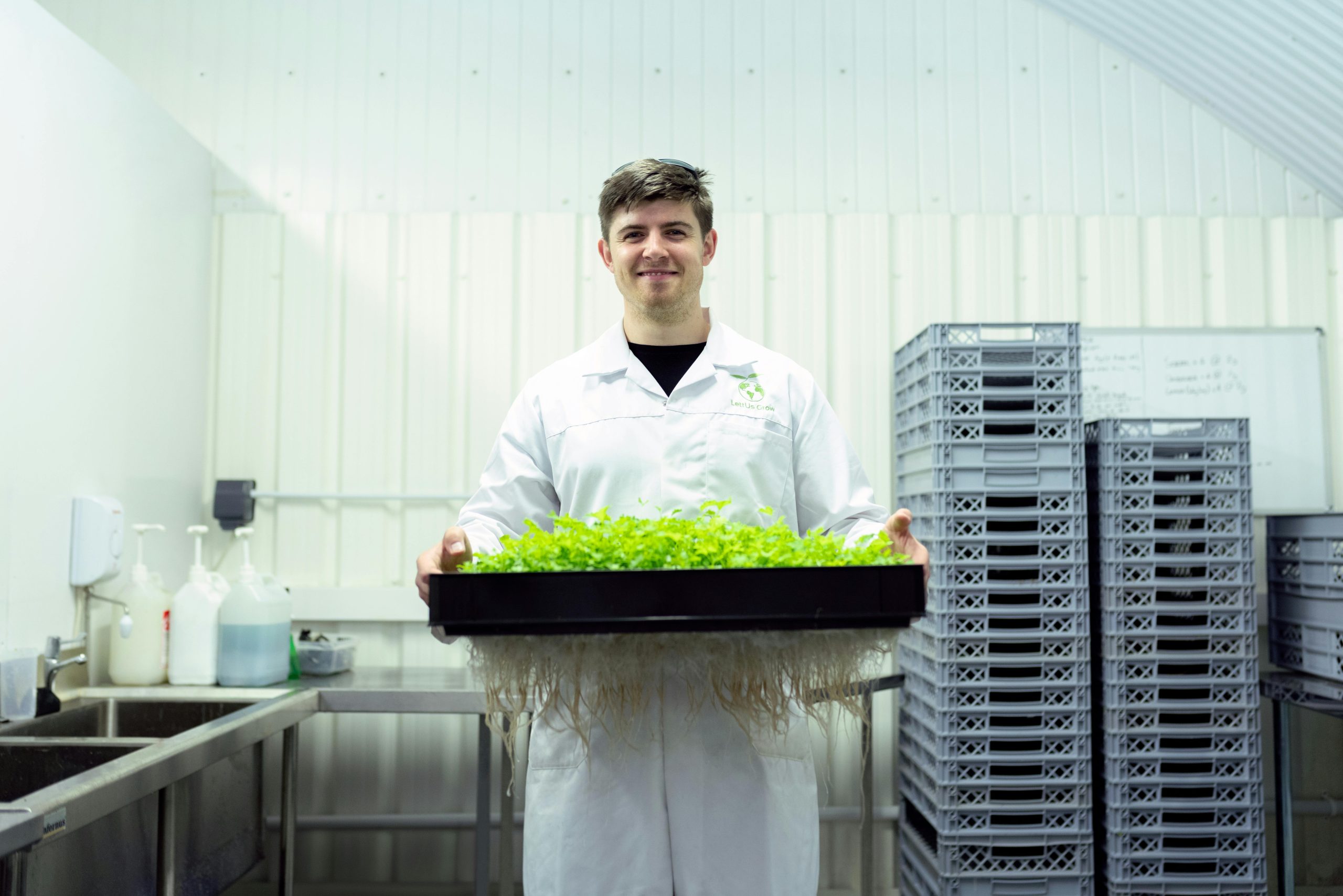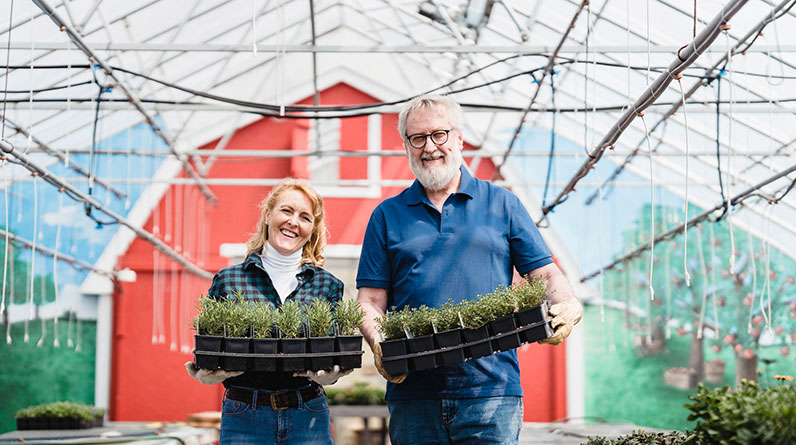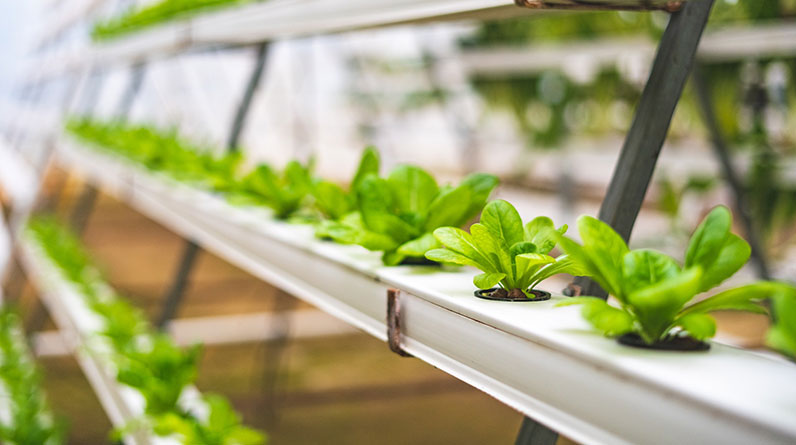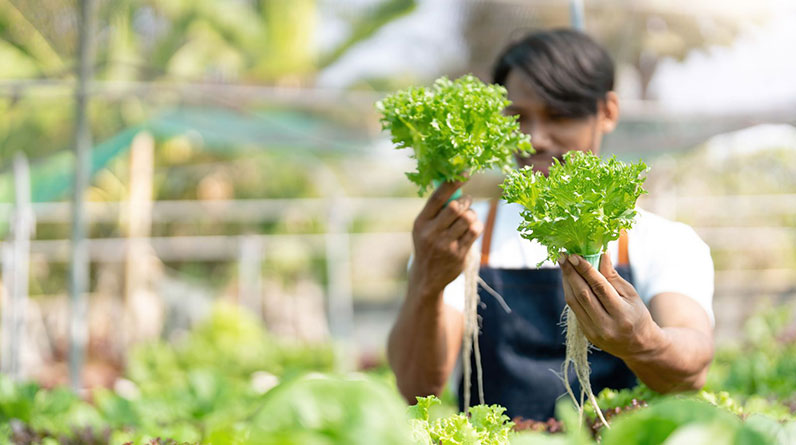
Hydroponic gardening has taken the world by storm in recent years, revolutionizing the way we grow plants. This innovative technique allows plants to grow in a nutrient-rich solution without the need for soil, making it a popular choice for urban farming and indoor gardening. With the ability to grow a range of plants, from herbs and vegetables to flowers and fruits, hydroponic gardening offers endless possibilities.
One of the biggest advantages of hydroponic gardening is the ability to control the environment in which plants grow. This means that factors like light, temperature, and humidity can be adjusted to optimize plant growth and yield. Additionally, hydroponic gardening requires less water than traditional soil-based gardening, making it a more sustainable option.
Another benefit of hydroponic gardening is the ability to grow plants year-round, regardless of the weather outside. This makes it a popular choice for those who want to grow fresh produce at home, regardless of the season. Additionally, hydroponic gardening can be done indoors, making it a great option for those with limited outdoor space.
In this introductory article, we will explore the world of hydroponic gardening, covering topics such as the different types of hydroponic systems, the best plants to grow, and the benefits and drawbacks of this innovative technique. Whether you’re a seasoned gardener or just starting out, hydroponic gardening offers a unique and exciting way to grow plants. So, let’s dive in and explore the world of hydroponic gardening!
What Is Hydroponic Gardening?
 Hydroponic gardening is a method of growing plants without soil. Instead, plants are grown in a nutrient-rich solution that is delivered directly to their roots. This method of gardening has become increasingly popular in recent years due to its many benefits.
Hydroponic gardening is a method of growing plants without soil. Instead, plants are grown in a nutrient-rich solution that is delivered directly to their roots. This method of gardening has become increasingly popular in recent years due to its many benefits.
One of the main benefits of hydroponic gardening is that it allows for faster and more efficient plant growth. Because the plants are receiving all of their nutrients directly from the solution, they are able to grow much faster than they would in soil. Additionally, because the solution is constantly being circulated, the plants are able to absorb nutrients more efficiently, which leads to healthier and more robust growth.
Another benefit of hydroponic gardening is that it allows for greater control over the growing environment. Because the plants are not growing in soil, it is easier to control factors like pH levels, temperature, and humidity. This means that growers can create the perfect growing conditions for their plants, which can lead to higher yields and better quality crops.
Hydroponic gardening is also more sustainable than traditional gardening methods. Because the plants are grown in a closed system, there is very little waste produced. Additionally, because the plants are grown without soil, there is no need for pesticides or other harmful chemicals, which can be harmful to both the environment and human health.
Overall, hydroponic gardening is a highly effective and sustainable method of growing plants. Whether you are a commercial grower or a hobbyist gardener, this method of gardening is definitely worth considering.
Benefits
Hydroponic gardening offers numerous benefits to both the environment and the grower. One of the most significant advantages of hydroponic gardening is that it conserves water. Compared to traditional soil-based gardening, hydroponic gardening uses up to 90% less water. This is because the water used in hydroponic gardening is recirculated, and any excess is collected and reused. Additionally, hydroponic gardening eliminates the need for pesticides and herbicides, which can be harmful to the environment.
Another major benefit of hydroponic gardening is that it allows for year-round cultivation. Unlike traditional gardening, which is limited by seasonal changes, hydroponic gardening can be done indoors, in a controlled environment, and is not affected by weather conditions. This means that growers can have a constant supply of fresh produce, regardless of the time of year.
Hydroponic gardening also allows for faster growth and higher yields. Since the plants are grown in a nutrient-rich solution, they can absorb nutrients more efficiently, leading to faster growth and higher yields. Additionally, hydroponic gardening allows for precise control over the growing environment, including temperature, humidity, and lighting, which can further enhance plant growth.
Finally, hydroponic gardening is a sustainable and space-efficient method of cultivation. Since hydroponic systems can be built vertically, they take up less space than traditional soil-based gardens, making them ideal for urban environments. Additionally, hydroponic gardening produces less waste and requires fewer resources than traditional gardening, making it a more sustainable option for growers.
In conclusion, hydroponic gardening offers numerous benefits, including water conservation, year-round cultivation, faster growth and higher yields, and sustainability. Whether you’re a seasoned gardener or just starting, hydroponic gardening is a great option for anyone looking to grow fresh produce in a sustainable and efficient way.
Types of Hydroponic Systems
Hydroponic gardening is a method of growing plants without soil, using nutrient-rich water instead. There are several types of hydroponic systems that you can use to grow your plants. In this article, we will discuss some of the most popular ones.
1. Deep Water Culture (DWC) System
The DWC system is one of the simplest hydroponic systems. It involves suspending the plants’ roots in nutrient-rich water, with an air pump providing oxygen to the roots. This system is great for growing leafy greens and herbs.
2. Nutrient Film Technique (NFT) System
The NFT system involves a thin film of nutrient-rich water flowing over the plants’ roots, which are suspended in a channel. This system is great for growing lightweight plants, such as lettuce and strawberries.
3. Drip System
The drip system involves a pump that drips nutrient-rich water onto the plants’ roots. This system is great for growing larger plants, such as tomatoes and cucumbers.
4. Aeroponic System
The aeroponic system involves suspending the plants’ roots in a mist of nutrient-rich water. This system is great for growing plants that require a lot of oxygen, such as strawberries and lettuce.
5. Ebb and Flow System
The ebb and flow system involves flooding the plants’ roots with nutrient-rich water, then draining it away. This system is great for growing a variety of plants, including tomatoes, peppers, and herbs.
In conclusion, there are many types of hydroponic systems to choose from, each with its own advantages and disadvantages. By understanding the different types of systems available, you can choose the one that’s right for you and your plants.
How Does It Work?
Hydroponic gardening is a method of growing plants without soil, using a nutrient-rich water solution instead. The plants are supported by a growing medium, such as rockwool, perlite, or coconut coir, which provides stability and aeration.
The hydroponic system works by delivering the nutrient solution directly to the plant roots, allowing them to absorb nutrients more efficiently than in traditional soil-based gardening. The nutrient solution is typically made up of a mix of essential plant nutrients, such as nitrogen, phosphorus, and potassium, along with trace elements like iron, calcium, and magnesium.
There are several different types of hydroponic systems, each with its own unique set of advantages and disadvantages. Some of the most popular systems include deep water culture, nutrient film technique, and drip irrigation.
In a deep water culture system, plants are suspended in a nutrient solution that is constantly aerated to provide oxygen to the roots. In a nutrient film technique system, a thin film of nutrient solution is circulated over the roots of the plants. Drip irrigation systems deliver nutrient solution directly to the base of each plant through a series of tubes and emitters.
Hydroponic gardening offers several benefits over traditional soil-based gardening, including faster growth rates, higher yields, and better control over nutrient levels. It also requires less water and space, making it an ideal option for urban gardening or indoor growing.
Overall, hydroponic gardening is a highly efficient and effective method of growing plants that has become increasingly popular in recent years. Whether you’re a seasoned gardener or just starting out, hydroponics is definitely worth considering as a way to grow healthy, vibrant plants.
What Can Be Grown?
Hydroponic gardening is a popular method of growing plants without soil. With this technique, you can grow a wide variety of plants, from herbs and vegetables to fruits and flowers.
One of the benefits of hydroponic gardening is that you can grow plants year-round, regardless of the weather outside. This means you can grow crops that are typically only available during certain seasons, such as tomatoes, peppers, and strawberries.
Herbs are also a popular choice for hydroponic gardening. Basil, cilantro, parsley, and mint are just a few examples of herbs that thrive in a hydroponic system. These plants are easy to grow and can add fresh flavor to your meals.
In addition to herbs and vegetables, hydroponic gardening can also be used to grow fruits such as strawberries, melons, and even citrus fruits. With the right setup, you can create a mini orchard right in your own home.
Flowers are another option for hydroponic gardening. Roses, orchids, and lilies are just a few examples of flowers that can be grown using this method. With hydroponics, you can create a beautiful indoor garden that blooms all year long.
In conclusion, hydroponic gardening offers a wide range of possibilities when it comes to what can be grown. From herbs and vegetables to fruits and flowers, the options are limitless. With the right setup and care, you can create a thriving indoor garden that provides fresh produce and beautiful blooms all year round.
Nutrient Solutions are a crucial aspect of hydroponic gardening. In this method of gardening, plants are grown in a soil-less environment, and all necessary nutrients are provided through a nutrient solution. This solution is a mixture of water and essential nutrients that plants require for growth.
There are a variety of nutrient solutions available in the market, each with its own unique blend of nutrients. However, it is important to note that not all plants have the same nutrient requirements. Therefore, it is essential to choose a nutrient solution that is specific to the type of plant being grown.
The three primary macronutrients that plants require are nitrogen, phosphorus, and potassium. These nutrients are essential for plant growth, and a deficiency in any of these nutrients can lead to stunted growth or even death of the plant. In addition to these macronutrients, plants also require micronutrients such as calcium, magnesium, and iron.
It is important to maintain a proper balance of nutrients in the nutrient solution. Too much of one nutrient can lead to toxicity, while too little can lead to deficiency. Regular monitoring of the nutrient solution is necessary to ensure that the plants are receiving the right balance of nutrients.
In conclusion, nutrient solutions are a vital aspect of hydroponic gardening. Choosing the right nutrient solution and maintaining a proper balance of nutrients is essential for the healthy growth of plants. With the right care and attention, hydroponic gardening can be a highly successful and rewarding experience.
Maintenance
Maintaining a hydroponic garden is crucial to ensure the plants grow healthy and strong. Regular maintenance includes monitoring the pH levels of the water, checking for nutrient deficiencies, and keeping the system clean.
One of the most important aspects of hydroponic garden maintenance is monitoring the pH levels of the water. The ideal pH range for most hydroponic plants is between 5.5 and 6.5. Any deviation from this range can cause nutrient deficiencies, which can stunt plant growth or even kill the plants. pH levels can be easily monitored using a pH meter or test strips.
Another important aspect of hydroponic garden maintenance is checking for nutrient deficiencies. Hydroponic plants rely on nutrient-rich water to survive, and any lack of nutrients can cause stunted growth or even death. Common nutrient deficiencies include nitrogen, phosphorus, and potassium. These deficiencies can be easily remedied by adding the appropriate nutrient solution to the water.
Keeping the system clean is also important for hydroponic garden maintenance. Algae, bacteria, and other microorganisms can grow in the nutrient-rich water and clog the system. Regular cleaning of the system can prevent these issues and ensure the plants have access to clean water.
In conclusion, regular maintenance is crucial for a successful hydroponic garden. By monitoring pH levels, checking for nutrient deficiencies, and keeping the system clean, hydroponic gardeners can ensure their plants grow healthy and strong.
Common Problems
Hydroponic gardening can be a rewarding experience, but like any form of gardening, it comes with its own set of challenges. Here are some common problems you may encounter and how to address them.
One issue that hydroponic gardeners often face is nutrient deficiencies. Without soil, plants rely on nutrient solutions to thrive. If your plants are showing signs of yellowing leaves or stunted growth, it could be a sign that they are lacking essential nutrients. To solve this problem, check the pH level of your nutrient solution and adjust it as needed. You may also need to add more nutrients to the solution.
Another issue that can arise in hydroponic gardening is algae growth. Algae can quickly take over your nutrient solution and harm your plants. To prevent this, keep your nutrient solution out of direct sunlight and add an algaecide if necessary.
Root rot is another common problem in hydroponic gardening. This occurs when the roots of your plants become waterlogged and begin to rot. To prevent root rot, make sure your plants are getting enough oxygen by using an air stone or pump in your nutrient solution. You can also add beneficial bacteria to your solution to help prevent root rot.
Pests can also be a problem in hydroponic gardening. Common pests include aphids, spider mites, and whiteflies. To prevent pests, keep your hydroponic system clean and free of debris. You can also use natural pest control methods such as neem oil or ladybugs.
By being aware of these common problems and taking steps to prevent and address them, you can have a successful hydroponic garden.
In conclusion, hydroponic gardening is an innovative and sustainable way to grow plants without soil. Throughout this post, we have covered a range of topics related to hydroponic gardening, including the benefits, types of hydroponic systems, nutrient solutions, maintenance, and common problems. We have also explored how hydroponic gardening works and what can be grown using this method.
One of the key benefits of hydroponic gardening is that it allows for more efficient use of resources such as water and nutrients. Additionally, hydroponic gardening can be done indoors, making it a great option for those with limited space or unfavorable weather conditions.
There are several types of hydroponic systems, each with its own set of advantages and disadvantages. Some of the most popular systems include deep water culture, nutrient film technique, and drip irrigation.
To ensure the success of your hydroponic garden, it is important to understand the nutrient solutions required for different plants and to maintain proper pH levels. Common problems such as pests and diseases can also be addressed through proper maintenance.
Looking to the future, we can expect to see continued advancements in hydroponic gardening technology and an increasing focus on sustainable agriculture practices. As a reader, it is important to stay informed and to consider incorporating hydroponic gardening into your own gardening practices.
In conclusion, hydroponic gardening is a fascinating and innovative way to grow plants with a range of benefits. By following the tips and advice provided in this post, you can create a successful hydroponic garden of your own. Thank you for reading and please feel free to leave any comments or feedback.


